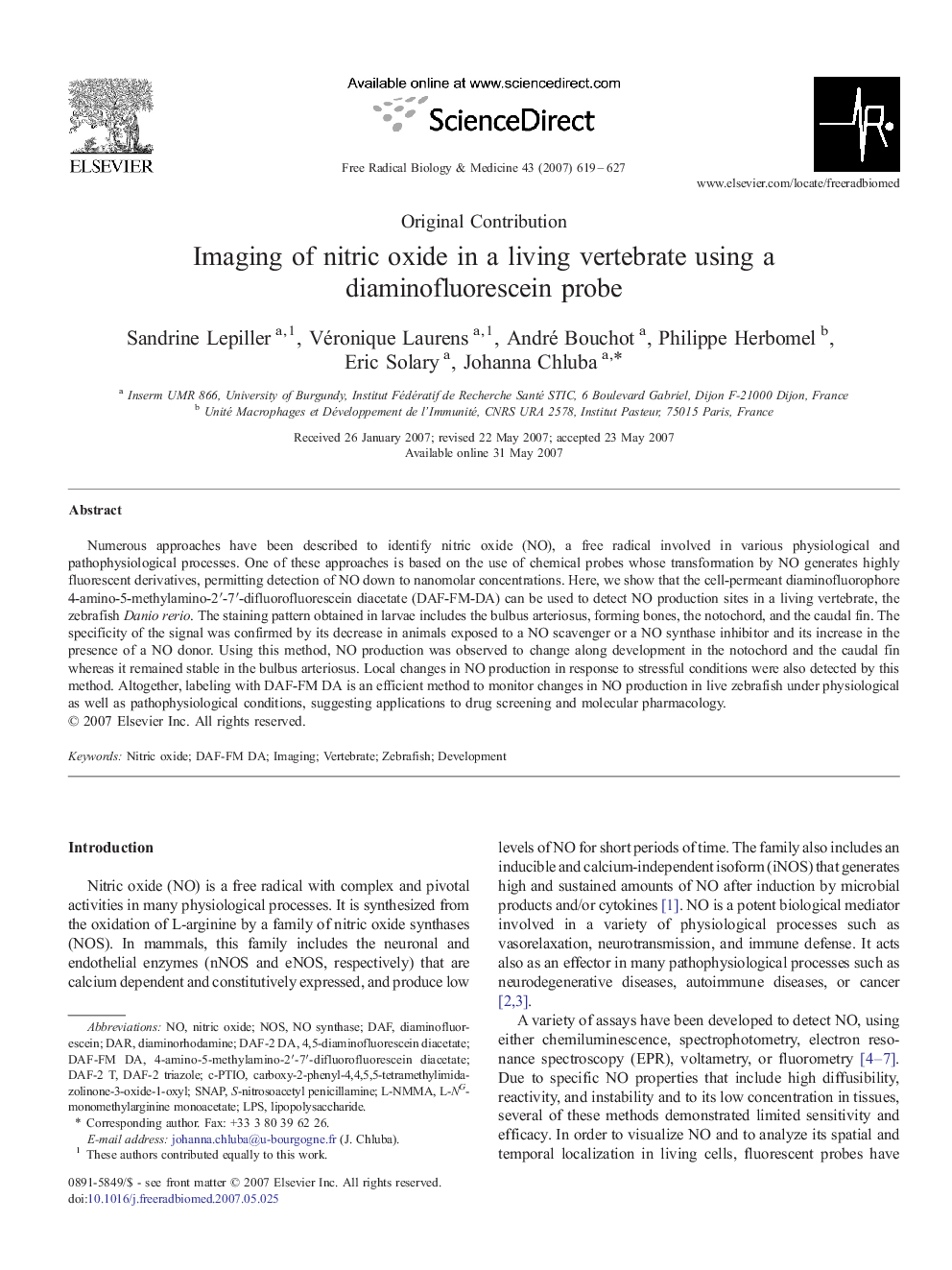| Article ID | Journal | Published Year | Pages | File Type |
|---|---|---|---|---|
| 1911062 | Free Radical Biology and Medicine | 2007 | 9 Pages |
Numerous approaches have been described to identify nitric oxide (NO), a free radical involved in various physiological and pathophysiological processes. One of these approaches is based on the use of chemical probes whose transformation by NO generates highly fluorescent derivatives, permitting detection of NO down to nanomolar concentrations. Here, we show that the cell-permeant diaminofluorophore 4-amino-5-methylamino-2′-7′-difluorofluorescein diacetate (DAF-FM-DA) can be used to detect NO production sites in a living vertebrate, the zebrafish Danio rerio. The staining pattern obtained in larvae includes the bulbus arteriosus, forming bones, the notochord, and the caudal fin. The specificity of the signal was confirmed by its decrease in animals exposed to a NO scavenger or a NO synthase inhibitor and its increase in the presence of a NO donor. Using this method, NO production was observed to change along development in the notochord and the caudal fin whereas it remained stable in the bulbus arteriosus. Local changes in NO production in response to stressful conditions were also detected by this method. Altogether, labeling with DAF-FM DA is an efficient method to monitor changes in NO production in live zebrafish under physiological as well as pathophysiological conditions, suggesting applications to drug screening and molecular pharmacology.
